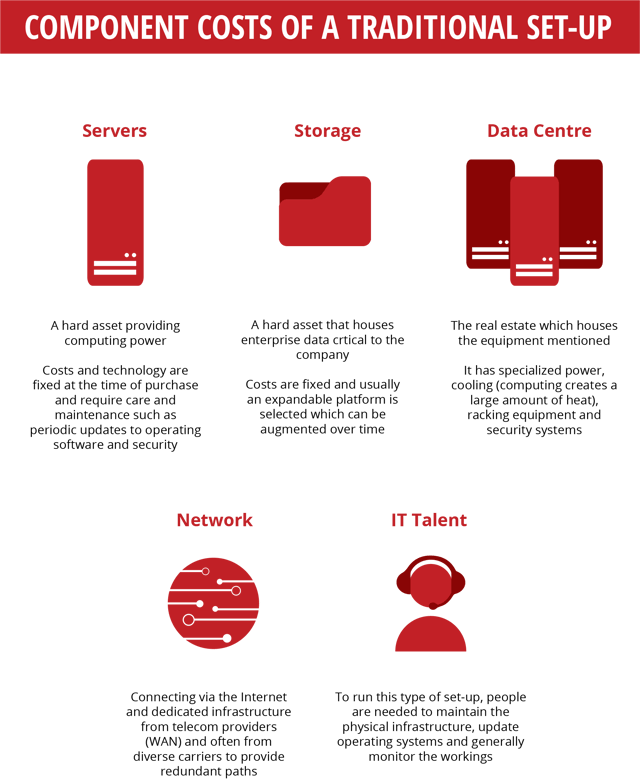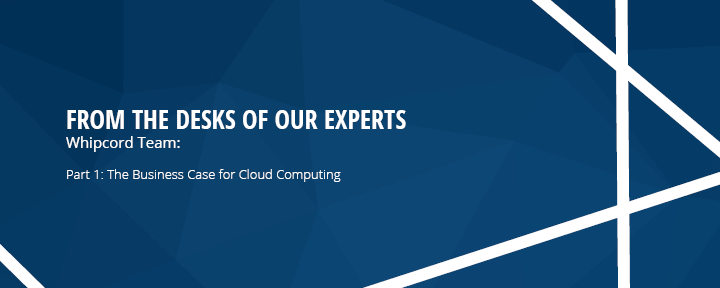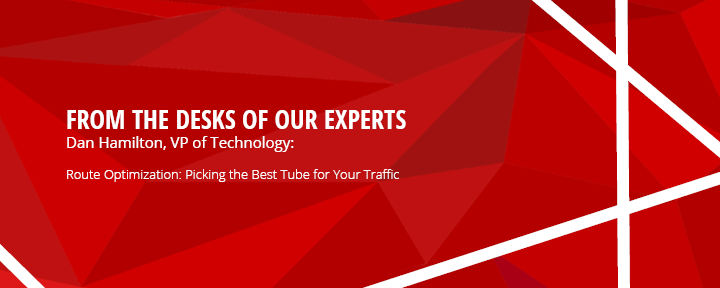It’s difficult to talk about computing and IT infrastructure without the conversation quickly turning to the Cloud. For those who approach new technology with some skepticism or reservation, this can appear as another overly-hyped marketing gimmick - especially for those that have recently made an investment in their premise-based infrastructure. However, for others it’s a powerful technology, enabling businesses to do more with less and access technology previously out of reach or reserved for very large enterprises. In this blog series we'll present the business case for cloud computing to empower more organizations to properly understand the business case and financial advantages that augment the technological benefits of migrating to Cloud computing.
What is the Cloud?
There are many ways to explain the Cloud, but the easiest way is by understanding the structure and limitations of traditional infrastructure. Traditionally, computing and storage infrastructure are on company premises and accessed by users via a local area network (LAN), usually within the same building. Or, alternatively it can be accessed via a wide area network (WAN), typically connecting various offices in the same community, or more broadly between communities. This access can be through the internet or any dedicated communications infrastructure.
The infrastructure, compute and storage, are shared in this way by all users with access, with each user having fractional use of the resource, which is usually dependent and granted on the basis of application and job type. This architecture most often appears like a hub and spoke or ring and was traditionally a very effective way of sharing resources, representing an exponential leap from the traditional mainframe computing, which was the hallmark of enterprise computing in the 70’s and 80’s.
In the description above, the infrastructure is restricted to the size and power of the servers deployed and located in an office data centre that has a finite amount of space and power. The company’s computing power is therefore constrained to this resource as it's deployed.
However, in the event of change like a divestiture, acquisition or a project requiring high performance or storage from the computing resources temporarily, an incremental new deployment is required. This will consume budget, IT staffing resources and physical space, which are often not available and certainly not on an “on-demand” basis and so the business takes a back seat to their IT limitations. Conversely, consider a company that has overestimated and over spent deploying their data centre; they are now hand-cuffed to the care and maintenance of a resource that has a scale inappropriate for their business.

So what about Cloud? Simply, the Cloud can be defined as computing infrastructure, residing in a remote data centre, accessible via the internet or a WAN. The platform is owned and managed by a third-party organization and sold fractionally on a short-term basis. That’s it. All of the components described above, now centralized.
In this blog series we will present the business case for cloud computing to empower more organizations to see the financial advantages that augment the technological benefits of migrating to Cloud computing. In the next installment of this series, we will delve further into the different types of Cloud and the associated costs.
-1.png?width=1092&height=792&name=logo%20(1092x792)-1.png)
%20copy(black%20letters).png?width=1092&height=792&name=logo%20(1092x792)%20copy(black%20letters).png)




.png?width=100&height=91&name=white%20logo%20(100x91).png)